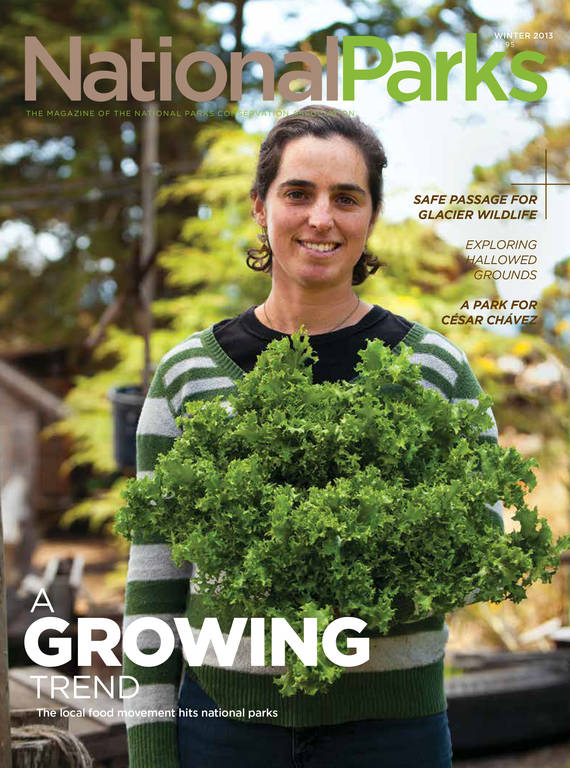Winter 2013
Digging in Native Soil
At Bighorn Canyon in Montana and Wyoming, an innovative archaeological field school partners with descendant communities.
To a hiker crossing the scrubby, ochre flats of Bighorn Canyon National Recreation Area last July, the sprawling archaeological encampment would have seemed out of place. It’s lonely in the high desert surrounding Bighorn Lake, a 72-mile-long reservoir in a thousand-foot canyon straddling the Montana-Wyoming border. The park averages just 200,000 recreational visits each year (Yellowstone, 90 miles to the west, sees that many in one mid-summer week), so when the dusty tents and tipis of the Bighorn Canyon Field School pop up for six weeks each summer, it’s a bit like a circus rolling into a ghost town.
RING LEADER
Since 2005, archaeology students from a handful of universities around the country have converged on Bighorn Canyon to document and map rock cairns, tool fragments, and stone tipi rings left by nomadic Plains Indians who traveled across the landscape for more than 10,000 years. A partnership between the Park Service and a consortium of public and tribal colleges, the field school has long distinguished itself from other student digs with a commitment to engaging tribal members from the adjacent Crow and Northern Cheyenne Nations. In the past, participants have led Crow grade-schoolers and recent high-school grads in workshops and mini-camps dedicated to identifying and excavating historical artifacts. Then, in 2011, the field school went one step further, launching a unique job-training program that prepares adult tribal members to work on development crews as archaeological surveyors and cultural resource monitors. “We try to treat archaeology as a community project rather than an academic research agenda,” says Utah State University archaeologist Judson Finley, one of the field school’s co-founders. Historically, Finley explains, archaeologists have paid little attention to whether their research involves or profits local and descendant communities. “We turn things on their heads by approaching people and asking, ‘What can we do for you? How can we meet your needs?’”
When representatives from the Park Service asked Northern Plains tribal leaders those questions in 2010, the tribes suggested more publications and workshops to help train tribal historic preservation staff and officials. Tribes have the authority to designate and protect culturally significant properties on reservation lands under a 1992 amendment to the National Historic Preservation Act. Some tribes, like the Navajos and Hopis, got a jump on this in the 1990s, but others lagged behind. Today, increased oil and gas exploration have helped prompt a renewed emphasis on preserving cultural resources (think pre-Columbian buffalo jumps and burial grounds), but many tribal preservation staff lack the professional training needed to identify and document historical sites and artifacts. One Park Service staffer considering the tribes’ request was Judson Finley’s dad, Bighorn Canyon cultural resource manager Chris Finley. The father-son duo had been performing research around Bighorn Canyon since Judson was a young grad student, more than a decade ago. Rather than hire contractors for upcoming archaeological inventories, Chris thought, why not fund scholarships for tribal members to perform the work with the field school while earning certificates in archaeology and historic preservation?

National Parks
You can read this and other stories about history, nature, culture, art, conservation, travel, science and more in National Parks magazine. Your tax-deductible membership donation of $25 or more entitles…
See more ›For the camp’s non-native researchers, working alongside students from descendant communities offers a chance to soak up cultural knowledge. The park itself benefits from essential inventory and mapping of archaeological sites, and the value of student researchers’ volunteer hours supersedes program costs. For the tribes, meanwhile, the field school fills an expertise gap and empowers native communities to better manage their own cultural resources in the face of development pressure. What’s more, the program is reintroducing tribal members to a Bighorn Canyon landscape from which they’ve long been alienated. Until the 1930s, tribal members needed permits to travel off-reservation. In the ’50s and early ’60s, the U.S. government condemned thousands of acres of Crow land to construct the Yellowtail Dam, which birthed Bighorn Lake and flooded ancestral territory, restricting access to what’s now the park’s southern unit. Generations of Crow have never glimpsed the dramatic canyon walls and prairie-grass uplands mentioned in their oral histories. Today, however, Crow and Northern Cheyenne elders are returning to the region to talk with field-school participants about the prehistoric era that the Crow call Biiaakashissihipee—“when we used stones to weigh down our lodges”—a reference to the circles of stone tipi-anchors that participants are documenting. As tribal students and elders bring family and friends to visit the park, their renewed interest in the landscape gradually ripples across the reservations.
For students like Marty Lopez, a 27-year-old Crow tribal member studying anthropology at the University of Montana, last summer’s field school offered invaluable training with GPS, data collection, and object identification. It also offered a profound sense of direction.
“The field school really kicked off an interest for me,” says Lopez, who now hopes to finish a master’s degree and pursue anthropological research on the reservation where he grew up. He’d never seen Bighorn Canyon before last summer, but mapping an ancient campsite overlooking the gorge drove home the importance of protecting his tribe’s cultural resources. Now he hopes other visitors—both native and non-native—can experience a landscape that he holds on par with the country’s greatest natural and archaeological treasures.
“I was just blown away,” Lopez says. “It’s one step down from the Grand Canyon, in my eyes.“



